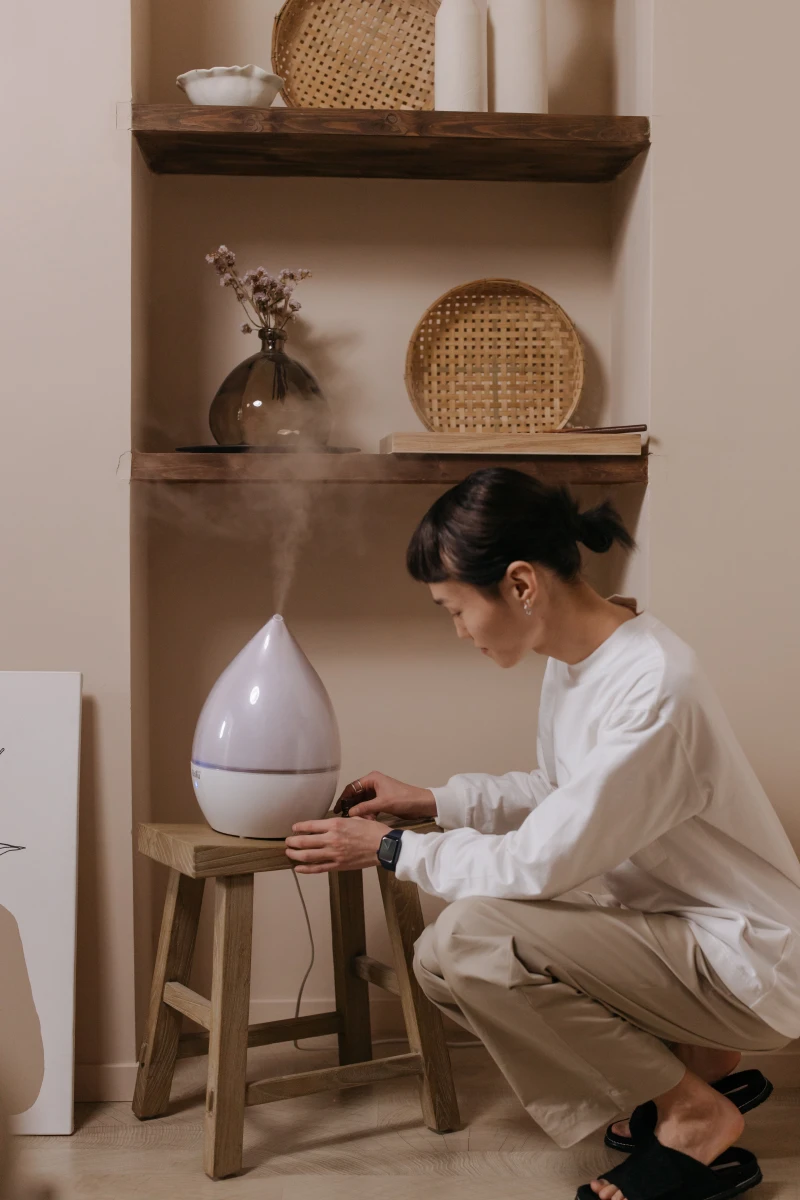That Annoying Cough Won’t Quit? Here’s What Your Body Is Trying to Tell You
We all know the sound. That deep, chesty rattle or the dry, tickly hack that echoes through the house at 3 AM. If you’re dealing with a cough right now, the first thing to remember is this: your cough isn’t the enemy. Think of it as your body’s over-eager security guard for your lungs—a powerful reflex meant to kick out anything that doesn’t belong there, whether it’s a speck of dust or gunk from a cold.
In this article
So, our goal isn’t just to silence it. Sometimes, that’s like firing the guard while intruders are still inside. The real mission is to understand what the cough is telling us so we can help it do its job better or, if it’s a false alarm, convince it to stand down.
This guide is all about the practical stuff. We’ll look at why you’re coughing, what you can do at home to find real relief, and—this is important—the signs that mean it’s time to call a professional.

First, What Kind of Cough Are We Dealing With?
Before you grab anything from the medicine cabinet, you have to play detective. The sound and feel of your cough are the biggest clues. Honestly, getting this part right is half the battle.
The Productive (Wet) Cough
This is the one that feels… productive. You can feel mucus rattling around in your chest, and each cough feels like it’s moving things up and out. Your body is doing exactly what it’s supposed to: clearing phlegm from your airways to keep it from settling and causing bigger problems.
- What it feels like: A heavy, congested feeling in your chest. Often described as a “rattly” or “gurgly” cough.
- The goal: Don’t stop it! You want to make it more effective by thinning the mucus so it’s easier to clear out.
- Best remedies: We’re talking expectorants, steam, and serious hydration. More on those in a minute.
By the way, don’t get too hung up on the color of your mucus. For years, people thought green or yellow automatically meant a bacterial infection. But we now know that color often just comes from your immune cells doing their job, even against a simple virus. The real red flags for a bacterial issue are things like a high fever that won’t break or feeling worse after you started feeling better.

The Non-Productive (Dry) Cough
This is the pointless, irritating one. It feels like a constant tickle in your throat that you can’t scratch, leading to those exhausting hacking fits that produce absolutely nothing. It’s basically your body’s alarm system going off when there’s no fire.
- What it feels like: A tickle, an itch, or general irritation in the throat. It’s often worse at night or when you breathe in cold air.
- The goal: Soothe the irritation. You want to coat your throat and calm down those overactive nerves.
- Best remedies: Think honey, soothing teas, and cough suppressants.
A few common culprits for a dry cough are post-nasal drip (the number one offender!), lingering irritation after a virus, and even acid reflux. Oh yeah, that last one surprises a lot of people. Stomach acid can splash up and irritate your throat, causing a chronic cough without any of the usual heartburn symptoms.

Your Cough-Busting Action Plan: The Basics
Before you even think about remedies, get these two foundational things right. I consider these non-negotiable for anyone trying to kick a respiratory bug.
1. Seriously, Hydrate
You’ve heard “drink plenty of fluids” a million times, but here’s why it actually matters. Your body needs water to make mucus thin and slippery. When you’re dehydrated, it becomes thick and sticky—making a wet cough harder to clear and a dry throat feel even scratchier.
Aim for at least 6-8 glasses of water a day. Warm fluids are even better. A cup of herbal tea or just hot water with lemon provides hydration and the steam helps moisten your airways. A quick tip: a good way to know if you’re hydrated enough is to check your urine. It should be a pale, straw-like color.
2. Fix Your Air
Dry air, especially from indoor heating in the winter, is the enemy of an irritated throat. It sucks the moisture right out of your airways, making that tickly cough so much worse. The fix? A humidifier.

I always recommend a cool-mist humidifier because they’re safer (no risk of steam burns), particularly if you have kids or pets. You can grab a decent one for between $30 and $60 at most big-box stores or online. Aim for an indoor humidity level between 40% and 50%. You can get a cheap little gadget called a hygrometer for about $10 to measure it.
Heads up! You HAVE to clean your humidifier. From my experience, a dirty humidifier can be the secret cause of a persistent cough. I once worked with someone whose nagging cough just wouldn’t quit for weeks. Turns out, they were running a humidifier 24/7 but had never cleaned it. Once they did a deep clean with vinegar, the cough vanished in three days. It’s that important!
Targeted Remedies and Over-the-Counter Help
Okay, with the basics covered, let’s get specific. Here’s how you match the treatment to the cough.

For That Dry, Hacking Cough:
Your goal is to soothe and suppress. Give those irritated nerves a break.
- Honey: This isn’t just an old wives’ tale; science actually backs it up. Honey coats the throat, acting as a soothing agent called a demulcent. Some studies show it works just as well as over-the-counter suppressants. Go for a teaspoon of dark honey, like buckwheat, either straight or in some warm tea. (Critical Safety Warning: Never give honey to a child under one year old due to the risk of infant botulism.)
- Herbal Teas: Certain herbs are fantastic for this. Marshmallow root and slippery elm both contain a gel-like substance that coats and protects your throat. You can find these at most health food stores or online. Thyme tea is another great one for easing throat spasms.
- Cough Suppressants: This is where you look for an over-the-counter medicine with Dextromethorphan. It works by blocking the cough reflex in your brain. This is your best friend when a dry, pointless cough is keeping you up all night.

For That Wet, Chesty Cough:
Here, you want to help your body, not hinder it. The goal is to make each cough count.
- Expectorants: Look for an OTC medicine containing Guaifenesin (it’s the active ingredient in products like Mucinex). It works by thinning mucus, making it much easier for you to cough it up and out. This is the one you want for that deep, rattly cough.
- Steam Sessions: The warm, moist air helps loosen everything up. The safest way is to just take a hot, steamy shower for about 15 minutes. It’s just as effective as leaning over a bowl of hot water, but with zero risk of a burn.
- Saltwater Gargle: This classic remedy reduces throat swelling and helps loosen mucus. The recipe is simple but effective: mix 1/4 to 1/2 teaspoon of salt into 8 ounces of warm water. Gargle for 30 seconds, then spit. Repeating this 3-4 times a day can really help.

If You Suspect an Underlying Issue…
If your cough seems to be from post-nasal drip or reflux, you have to treat the source.
- For Post-Nasal Drip: A saline rinse using a Neti pot or sinus rinse bottle is a game-changer. It literally washes irritants and mucus out of your sinuses before they can drip down your throat. Just be sure to use ONLY distilled, sterile, or previously boiled water to be safe.
- For Acid Reflux (GERD): If you suspect this is your issue, try this tonight: elevate the head of your bed by about 6 inches (a few sturdy books under the bed legs works great) and avoid eating for at least 3 hours before you lie down. See if that makes a difference in your morning cough.
When to Stop Guessing and See a Doctor
Most coughs are just a nuisance, but sometimes they’re a sign of something more serious. A cough that hangs around for more than three weeks without improving is worth getting checked out. And if it lasts for 8 weeks or more, it’s officially considered a “chronic cough,” and you should definitely see a professional.

Trust your gut. Contact your doctor immediately if you experience any of these red flags:
- Coughing up blood or pink-tinged phlegm
- Shortness of breath, wheezing, or chest pain
- A high fever (over 101.3°F or 38.5°C)
- Unexplained weight loss or night sweats
- A “barking seal” sound (in kids, this could be croup)
- A violent, uncontrollable cough followed by a “whooping” sound on the inhale
Ultimately, learning to interpret your cough is about working with your body. By giving it the right support, you can quiet the noise and get back to feeling like yourself a whole lot sooner.
Inspiration:


Guaifenesin (in Mucinex): Think of this as the “clean-up crew” for a wet, productive cough. It doesn’t stop the cough, but it thins and loosens phlegm in your chest, making each cough more effective at clearing things out.
Dextromethorphan (in Delsym, Robitussin DM): This is the “silencer” for a dry, hacking, non-productive cough that serves no purpose but to irritate your throat and keep you up all night. It works on the brain’s cough center to suppress the reflex.
Choosing the right one is key to finding relief without working against your body’s natural defenses.

The World Health Organization (WHO) actually recommends honey as a potential treatment for coughs in children, citing studies that show it can be more effective than some over-the-counter medicines.
This is because honey has natural antibacterial properties and its thick consistency does a fantastic job of coating and soothing an irritated throat. A spoonful of raw, dark honey like Buckwheat or Manuka can be a powerful, simple remedy.

That stubborn nighttime cough just won’t quit?
Your bedroom air might be the culprit. Dry air, especially in heated or air-conditioned rooms, can parch your throat and nasal passages, worsening irritation. A good quality cool-mist humidifier, like a Vicks or Honeywell model, adds moisture back into the air, which can soothe your airways and help thin mucus. Just remember the golden rule: clean it daily with fresh, distilled water to prevent mold or bacteria from being dispersed—you don’t want to trade one problem for another!

- Soothes a raw, scratchy throat on contact.
- Provides a powerful boost of Vitamin C.
- Helps reduce inflammation in the airways.
The secret? A simple, homemade ginger-lemon-honey tonic. Just pour boiling water over a few slices of fresh ginger and a thick slice of lemon. Let it steep for 5 minutes, then stir in a generous teaspoon of raw honey until it dissolves. It’s a classic for a reason.

Beyond just a simple cough, look for these environmental triggers in your home that might be the real source of the irritation:
- Hidden Mold: Check under sinks, in basements, and around window sills for any signs of dampness or musty smells.
- Dust Mites: These microscopic culprits love bedding and carpets. Washing linens in hot water and vacuuming with a HEPA-filter vacuum can make a huge difference.
- Strong Scents: That new air freshener, scented candle, or strong cleaning product could be irritating your airways.

A gargle with salt water isn’t just an old wives’ tale—it works by osmosis. The high concentration of salt draws fluid out from the swollen tissues in your throat, reducing inflammation and temporarily relieving pain.
If your cough is accompanied by wheezing (a high-pitched whistling sound when you breathe), it’s not something to ignore. Wheezing indicates that your airways are narrowed, which can be a sign of asthma, bronchitis, or a more serious allergic reaction. While a simple cough can often be managed at home, wheezing always warrants a call to your doctor for a proper diagnosis.










